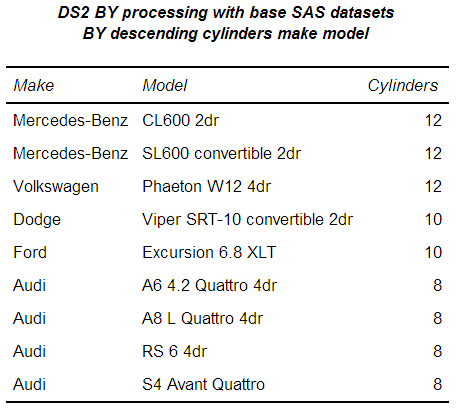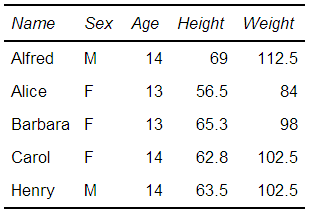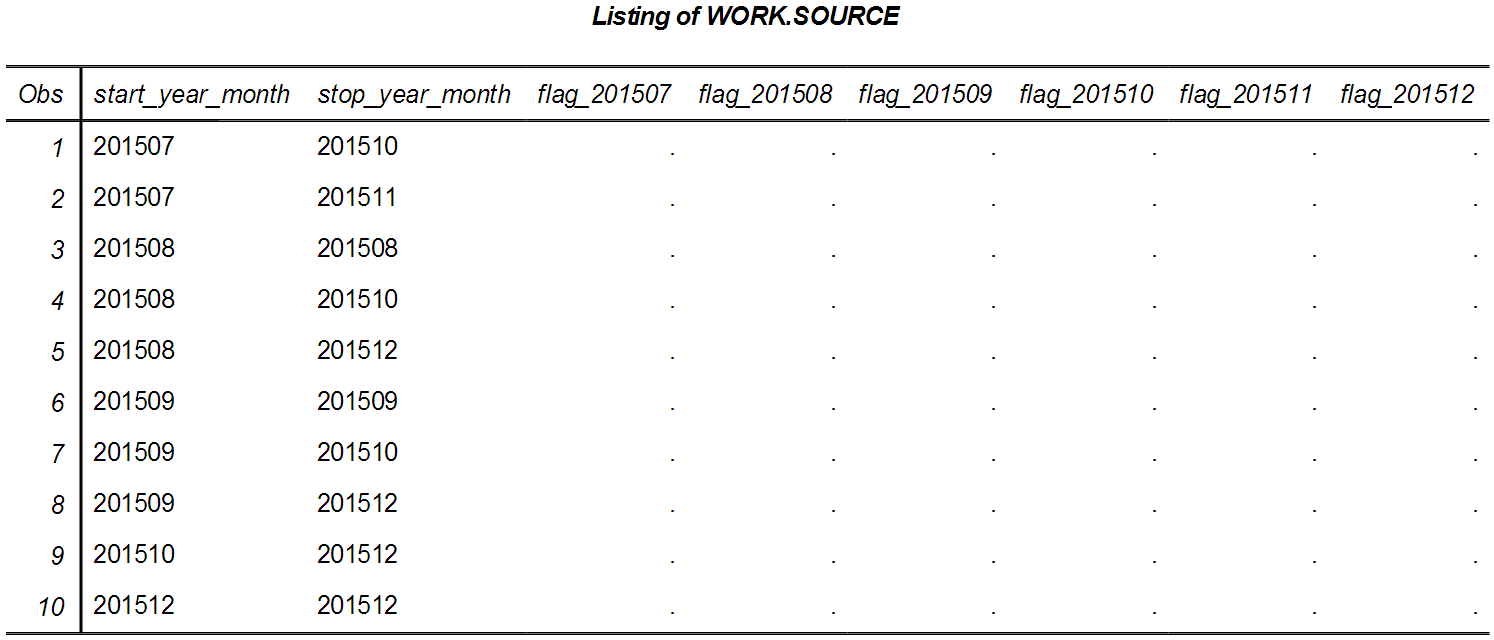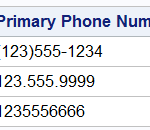
SAS' Mark Jordan shows you how to modify data using PROC SQL, PROC DATASETS and SAS macros.

SAS' Mark Jordan shows you how to modify data using PROC SQL, PROC DATASETS and SAS macros.

I use macros extensively in my SAS programs, and over the years have accumulated a few that I find quite useful. The integration of GIT and SAS Studio has made it easy to build a re-usable macro library, so I've put some of the more polished macros I've written in

Tired of waiting for answers? Then make your SAS code run faster with these 5 tips.

The SAS Jedi Mark Jordan presents his SAS Global Forum 2018 paper "Working with Big Data in SAS"

When speed is required at scale, it's hard to beat parallel processing data in memory with DS2 and SAS® Viya® with the amazing Cloud Analytic Services (CAS)!

You have the infrastructure, and you know that DATA step would run so much better in DS2, but it’s complicated and you don’t know how to get started. Well, if you have SAS 9.4M5, rejoice! The DStoDS2 procedure is here, and it’s a humdinger! (No, Chris, not a Hemedinger… ;-) It's

I ran across an interesting conundrum the other day. The intent was to compare the value of X to a list of desired values, and if X matched one of the values in the list, set Flag to 1, otherwise set Flag to 0. I wrote and executed this test program,

Finding a pattern like a phone number or national ID number embedded in text can be difficult and time consuming.

I often create temporary ODS output files - and getting rid of those files after I'm done is an extra chore I don't relish. For example, if I want to generate a PDF-only report and email it from SAS (see "Jedi SAS Tricks: Email from the Front – Part 2")

I hate hard-coding variable lists in my SAS code. I love the special variable lists SAS provides, like name:, _numeric_, etc. But back in 2011, I wrote a post titled Jedi SAS Tricks - Building a Name Suffix variable list lamenting the lack of a special variable list in base

I frequently get asked about my favorite book on a particular topic, how to find free SAS learning materials online, how to get help with SAS issues, etc. So I thought I'd share it with you here! Last updated 2/25/2020 Getting Started Resources New to SAS? Here's your SAS Starter

Dictionary tables are one of the things I love most about SQL! What a useful thing it is to be able to programmatically determine what your data looks like so you can write self-modifying and data-driven programs. While PROC SQL has a great set of dictionary tables, they all rely

This SAS Jedi is very excited about the SAS 9.4 M4 release, which brought many wonderful gifts just in time for Christmas. So in the interest of extending the Christmas spirit, I'm going to blog about some of my favorites! I've long loved the SAS DO statement variant which allows

One of the things I’ve come to love most about DS2 is the tight integration with SQL which makes so many data prep chores so much less onerous. An example is DATA program BY group processing. With a traditional DATA step, you must first sort or index the source data

A reader posed a question in the comments to an earlier Jedi SAS Trick, asking how to write the results of a DS2 DATA _NULL_ program to a text file. It's an interesting question, as DS2 currently has no text file handling statements or capabilities. Take, for example, this traditional

Have you been kicking around ideas for a great SAS book, but don’t know how to get started? Don’t wait another day – connect with the Publish with SAS community and let those amazing folks at SAS Press help you get your project rolling. You won’t regret it! I’m SO

In my previous post, Jedi SAS Tricks - Make This a Button in Base SAS I demonstrated running a SAS program from a tool bar button in the SAS Windowing environment. The program we execute is the macro from a previous post, Jedi SAS Tricks: The DATA to DATA Step

A recent post, Jedi SAS Tricks: The DATA to DATA Step Macro, engendered a lot of response on Twitter. One of the re-tweets included a call to action - make this a button in Base SAS!

"What's in a name?" asked Juliet. "That which we call a rose by any other name would smell as sweet." What if it's not roses we're after, but variable names which hold the values needed for a calculation?

I was answering questions about SAS in a forum the other day, and it struck me how much easier it is to help folks if they can provide a snippet of data to go along with their program when asking others to help troubleshoot. This makes it easy to run

I'm gearing up to teach the next "DS2 Programming Essentials with Hadoop" class, and thinking about Warp Speed DATA Steps with DS2 where I first demonstrated parallel processing using threads in base SAS. But how about DATA step processing at maximum warp? For that, we'll need a massively parallel processing

I remember the first time I was faced with the challenge of parallelizing a DATA step process. It was 2001 and SAS V8.1 was shiny and new. We were processing very large data sets, and the computations performed on each record were quite complex. The processing was crawling along on

While perusing the SAS 9.4 DS2 documentation, I ran across the section on the HTTP package. This intrigued me because, as DS2 has no text file handling statements I assumed all hope of leveraging Internet-based APIs was lost. But even a Jedi is wrong now and then! And what better

A SAS user (who lives in the the US) emailed me a question about SAS functions. He was reading UTC (Coordinated Universal Time) datetime values from server logs, and to make future calculations and comparisons easier, he wanted to transform the value to local datetime. The INTNX() function worked great, but

In the Star Wars movie, Obi-wan could just wave his hand, mutter a few words, and the stormtroopers would "move along". How the power of the Force makes ridding yourself of problematic characters so much easier! I recently was invited to become an alternate instructor for Ron Cody’s SAS Business

If you’ve taken one of my SAS classes you may recall “Mark’s 3 rules of programming”, the first of which is “Lazy programmers are GOOD programmers.” One of the things I love about best about SAS programming is the plethora of functions and shortcuts built into the language, all designed
I was building a nice little PDF report the other day. I love the way ODS PDF replicates the SAS Results window navigation structure as PDF bookmarks, but... I'd much rather write the text for the bookmarks myself. So, I decided to "use the SAS" and make ODS do my